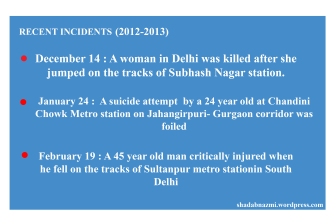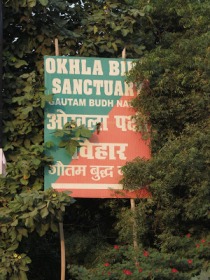Shadab Nazmi
“Had he (Rahul Gandhi) married a Dalit girl, who knows, he might have become the PM. Sonia says first become the PM and then bring a foreigner as bride. He goes to Dalit houses to have picnics and honeymoon,” said Baba Ramdev, mocking Rahul Gandhi’s status in understanding the life of a Dalit. It’s wasn’t just a plain mock. It shattered the integrity of a Dalit woman who goes through the hardship of life every other day. It was a mock of an entire community.
Election season is on full swing and Dalits are lifted back on the center stage. The gung-ho of spending nights, eating from the same plate and sleeping on the floor at Dalit’s homes, clearly reflects the political drama of collecting votes. Every party claims to be the savior of this community when they come in power, but does any party care to understand how Dalit men and women are exploited in every day of their lives? In an old war, everybody has an axe to grind. So how do you pick your way through these claims and counter-claims? How do you decide who is speaking truth? One way is to take a look at the condition of Dalit women since this country got independence. Let me tell you, the figures haven’t changed much. India hasn’t grown since. The Dalits haven’t grown since.
In Ancient India (3200-2500 B.C.), the caste system was non-existent since even the most learned men were good householders and had varied occupations. The women of ancient India were just as superior as men in learning, education, and intellect. The choice for her mate was according to her own wishes and marriage was practiced after the coming of age. She attended parties, competitions, and religious functions as she wished. The remarriage of young widows was also a common practice. The creation of a number of Hindu religious books including the Manusmriti, Atharva Vedas, Vishnu Smriti, and many others like these and their strict compliance by the Brahmans (upper priestly Hindu caste), led to a society in which equality between men and women was far from existent . Dr. B.R. Ambedkar, an architect of the Indian constitution, also makes it very clear in his150 article titled “The rise and fall of Hindu woman” that the root cause of suffering for women in India are these so called Hindu religious books. According to the Manusmriti, women have no right to education, independence, or wealth. It not only justifies the treatment of Dalit women as a sex object and promotes child marriage, but also justifies a number of violent atrocities on women as can be seen in the following verses:
A man, aged thirty years, shall marry a maiden of twelve who pleases
him. Or a man of twenty-four a girl of eight years of age. If (the
performance of) his duties would otherwise be impeded, he must marry
sooner. (Manusmitri IX.94)
By a girl, by a young woman, or even by an aged one, nothing must be
done independently, even in her own house.” (Manusmriti V.147)
Her father protects (her) in childhood, her husband protects (her) in
youth, and her sons protect (her) in old age; a woman is never fit for
independence. (Manusmriti IX.3)
Women have no right to study the Vedas. That is why their Sanskaras
are performed without Veda Mantras. Women have no knowledge of
religion because they have no right to know the Vedas. The uttering of
the Veda Mantras is useful for removing sin. As women cannot utter the
Veda Mantras, they are as unclean as the untruth. (Manusmriti IX.18)
A Brahman, Kshatriya, or Vaishya Man can sexually exploit any shudra
woman. (Manusmitri IX.25)
Even the killing of a dalit woman is explicitly justified as a minor offence for the Brahmins: equal to the killing of an animal (Manusmitri). If the killing of an untouchable was justified as a minor offence, you can imagine the treatment they received throughout their lives. In a male dominated society, Dalit women suffered unimaginable oppression, not only through caste, but gender too, from which there was no escape. The laws in the Manusmriti and other Vedic scriptures close all economic, political, social, educational, and personal channels through which Dalit women could be uplifted .The horrendous laws in the Manusmriti were incorporated into Hinduism because they were favorable only to the upper castes, which form the majority of India. Even today, in modern times, we see the severe oppression and exploitation of Dalit women. The Laws of the Manusmriti have a devastating effect on the level of education reached by Dalit women. According to the National Commission for Scheduled Castes and Scheduled Tribes 2000, approximately 75% of the Dalit girls drop out of primary school despite the strict laws of the Government of India, which hold reservations for Dalit children.
In one particular case, a four months pregnant agricultural laborer, from the southern part of India, was stripped naked and beaten, in front of the whole village and her family by the upper caste landlord. Later, she was retained in jail, where the police beat her. This resulted in the miscarriage of her baby
In another case, a school student in Gujarat made a mistake of joining the dancing in the main square of her village, in which most of the participants were of the upper caste. The upper caste boys pulled her out and threatened to rape her. For interfering, her mother was slapped. In the hope for justice, she forced her parents to file a complaint to the police against her assailants. Her mother was constantly threatened by the upper caste families for complaining to the police. Feeling deeply humiliated by no justice and rumors of rape, the girl committed suicide.
There are many cases like these, all of which cannot be discussed here. The worst exploitation of Dalit women involves a lifetime of suffering, torture, and rape Justified by the Vedic scriptures, the Devdasi system (also known as temple prostitution) was introduced by the High caste Hindus, and it still exists in some parts of India). According to the Human Right Watch Report in 1992, an estimated 50,000 girls were sold every year to Hindu organizations that are involved in the Devdasi system . These girls are called the “female servants of god” and are sexually exploited. After a lifetime of living as a prostitute and servant, the women in their later years are sold to brothels, where they are further tortured and often die of neglect or AIDS. The 1992-93 Annual report from the Ministry of Welfare shows 1,236 reported cases of rape on Dalit women and the National Commission for SC/ST shows that approximately 10,000 cases of human right violations on Dalits are reported every month. But what is even more disturbing, is that only one out of ten of the cases are reported annually whilst, nine go unreported. In addition to this, according to the Human Right watch Report, approximately 115 million children are in slavery and 2.6 million children are held as bonded laborers. After fifty-five years of India’s independence and despite the excellent laws in place to protect Dalit women, they are still suffering unimaginable atrocities from the high caste Hindus. It is believed that thousands of these cases go unreported and unpublicized because the poor Dalits that live in rural areas, who are the worst victims, have no control on power, wealth, justice, police and the media. The only way these Dalit women can escape the viscous cycle of poverty, abuse and oppression is through education. Through education more Dalit women can come to know their basic human rights and they can then raise an even stronger voice against abuse and exploitation from the upper castes.
Dalit are always in center when the election season starts to appear on television screens. Many issues are brought in front, many Dalit candidates are given tickets to collect free votes but suffering stays. It’s veiled with many promises but in the end, nothing changes. Everything gets back to square o
































